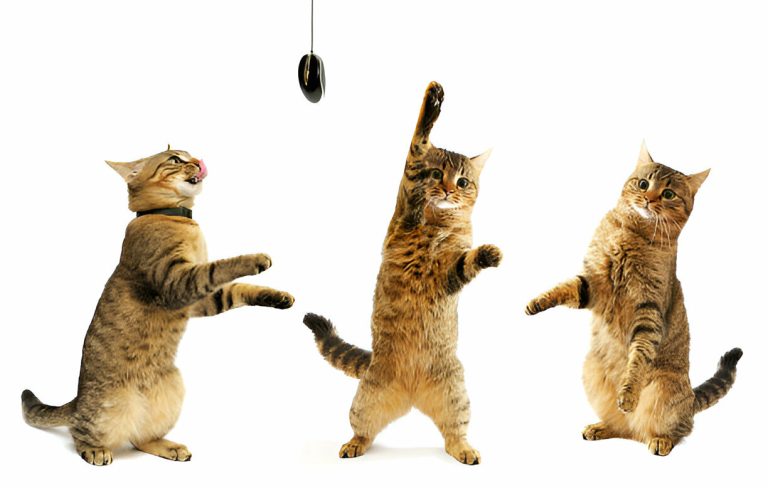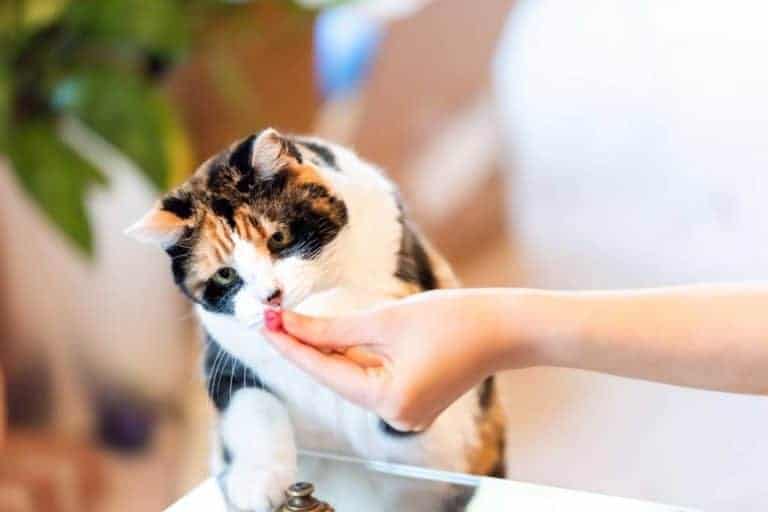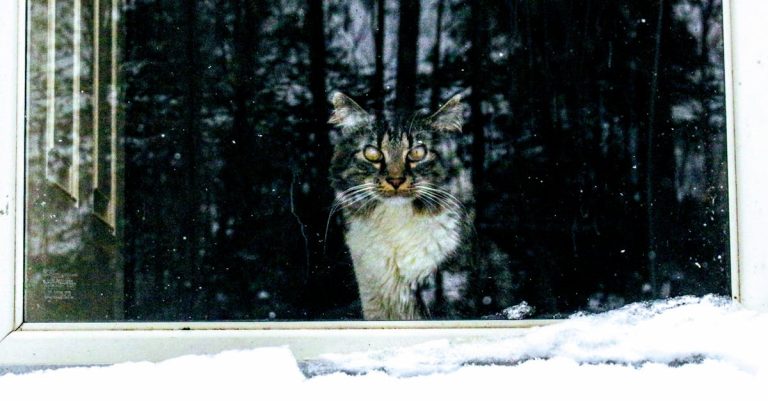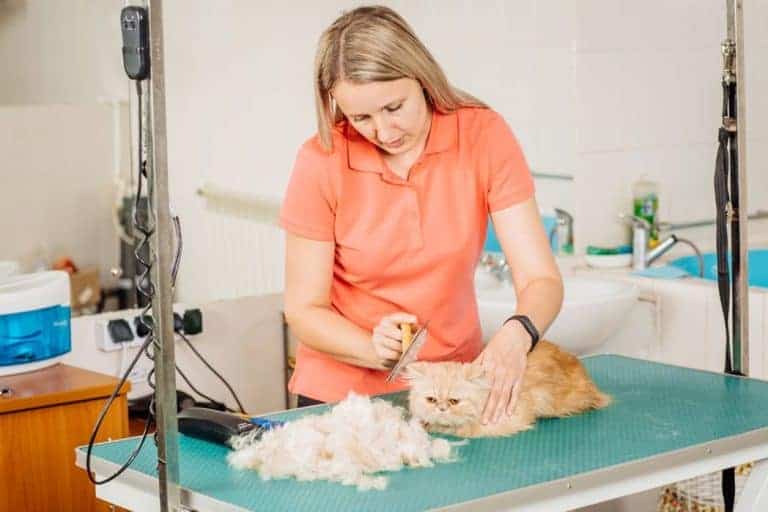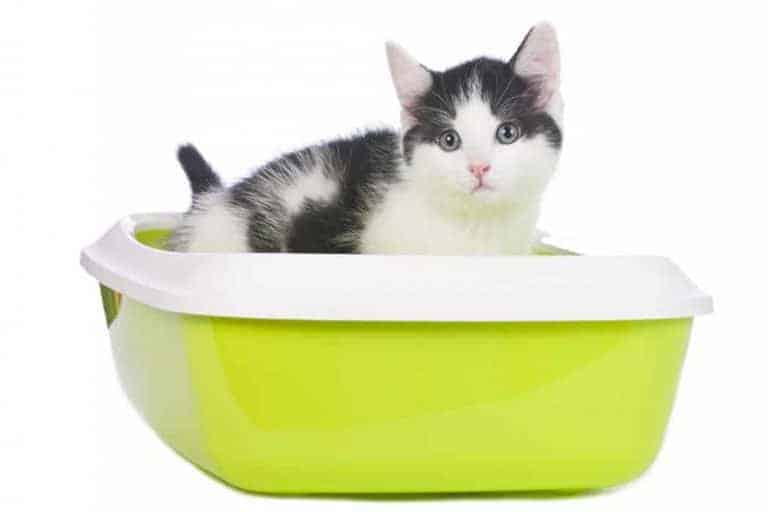Nourish Your Feline Friend: High Protein Low Carb Cat Food Options
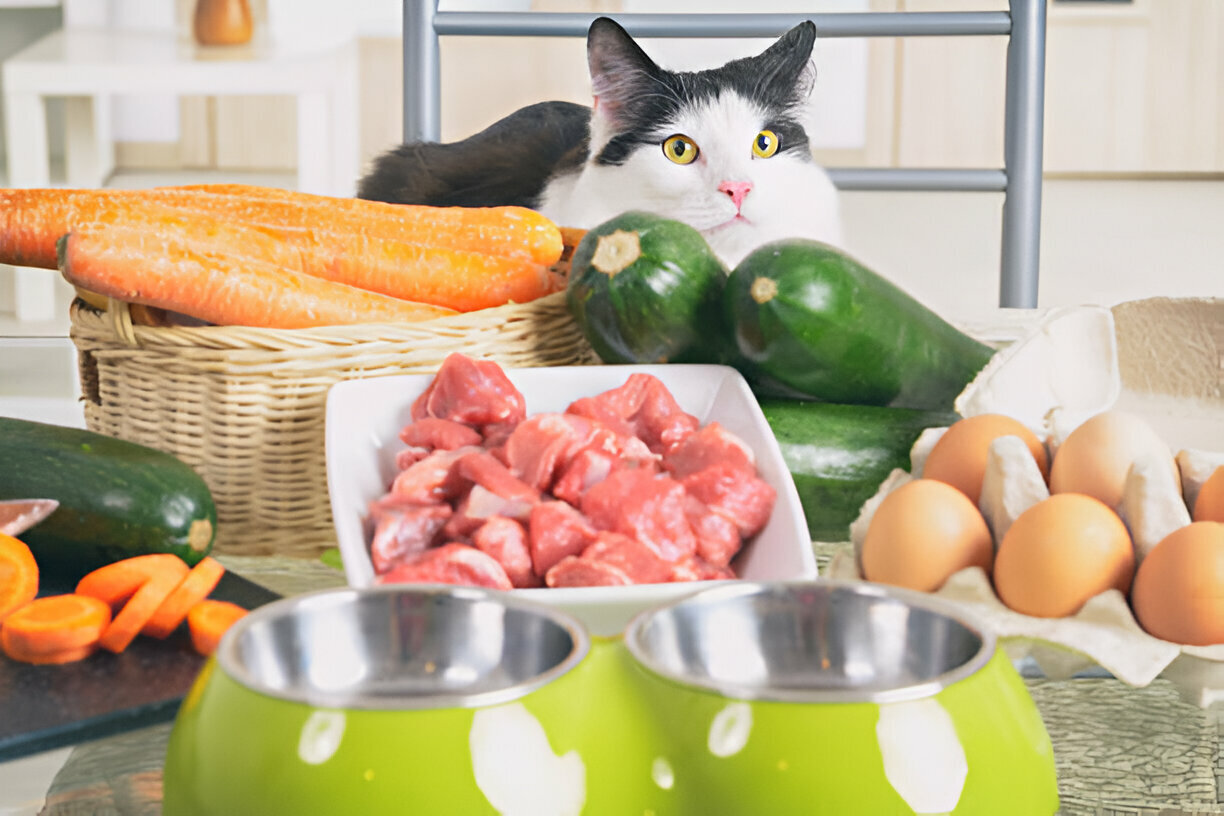
Cats are obligate carnivores, which means their bodies are designed to function optimally on a diet rich in animal protein. Unlike humans and some other animals, cats have a biological need for a high amount of protein and a very limited requirement for carbohydrates. This dietary predisposition makes high protein low carb cat food an appropriate choice for feline pet parents who aim to mimic their cat’s natural dietary patterns. Such formulations are crafted to provide the necessary nutrients while minimizing filler ingredients that do not align with a cat’s carnivorous nature.
When selecting high protein low carb cat food, one encounters a variety of novel and meticulously designed products. Some of these foods leverage real meat as the primary ingredient, without the addition of grains, which are common in many commercial cat foods but are not a natural part of a feline’s ancestral diet. This approach acknowledges that felines thrive on amino acids and nutrients found predominantly in meat. Furthermore, proponents of low carbohydrate cat diets suggest that these food choices can help in managing conditions such as diabetes and obesity, which are increasingly common among domesticated cats.
Given the tailored nature of high protein low carb cat food, there is significant emphasis placed on the quality of ingredients. Manufacturers often focus on premium sources of protein, such as free-range chicken, wild-caught fish, or grass-fed beef. These choices not only resonate with the palette of discerning felines but also with pet owners who are intent on providing their pets with meals reflective of a more natural, ancestral diet. This is accomplished without compromising on the convenience that modern pet foods offer, and it ensures that the nutrient-rich diet is also palatable and digestible.
With numerous high protein low carb options on the market, the forthcoming section of our discourse will delve into a selection of products considered top-tier. This analysis will not just skim the surface; instead, it will serve to dissect the nutritional profiles, taste, and overall health benefits, drawing upon real-world feedback and veterinary insights. This detailed examination will aim to shed light on how these products stand up to the demands of both feline biology and consumer expectations, ensuring that the information provided is both current and relevant to the conscientious cat owner.
- Cats are obligate carnivores, requiring diets high in protein to thrive, making high protein low carb cat food a suitable choice for their dietary needs.
- A high protein, low carbohydrate diet reflects a cat’s natural consumption pattern, helping to maintain muscle mass and reduce the risk of obesity and diabetes.
- Real meat, fish, or poultry should be the primary ingredient in high protein low carb cat food to ensure the protein content is of high quality.
- Foods labeled as “grain-free” are not inherently low in carbohydrates; it’s important to review the full ingredient list and nutritional breakdown.
- Wet cat foods often have higher protein and lower carb content compared to dry kibble, which can be beneficial for hydration and overall health.
- Consulting with a veterinarian is key when switching to a high protein low carb diet, especially for cats with existing health conditions.
- A gradual transition to new food is crucial to prevent digestive upset and to allow the cat’s system to adjust to the change in nutrient composition.
- An analysis of the amino acid profile in the food is important since cats have specific requirements for amino acids like taurine, which are vital for heart and eye health.
- Look for foods with a complete and balanced label in accordance with AAFCO (Association of American Feed Control Officials) to ensure the food meets minimum nutritional standards.
- Monitoring your cat’s weight, energy levels, and overall health is important to determine if a high protein low carb diet is having positive effects.
- Some high protein low carb foods are designed for specific life stages or health considerations, such as kitten growth, senior cat maintenance, or weight management.
- Ingredients to avoid in cat food include excessive fillers, artificial preservatives, colors, and flavors, which can undermine the benefits of a high-protein, low-carb diet.
- Feeding a variety of proteins and rotating between different food brands can help prevent sensitivities and provide a broader nutrient spectrum.
- In addition to commercial options, homemade high protein low carb diets can be formulated with the guidance of a veterinary nutritionist to ensure they are nutritionally balanced.
- It’s essential to measure portions to prevent overfeeding, as high-protein foods can be more calorie-dense, and the right amount varies according to the cat’s size, age, and activity level.
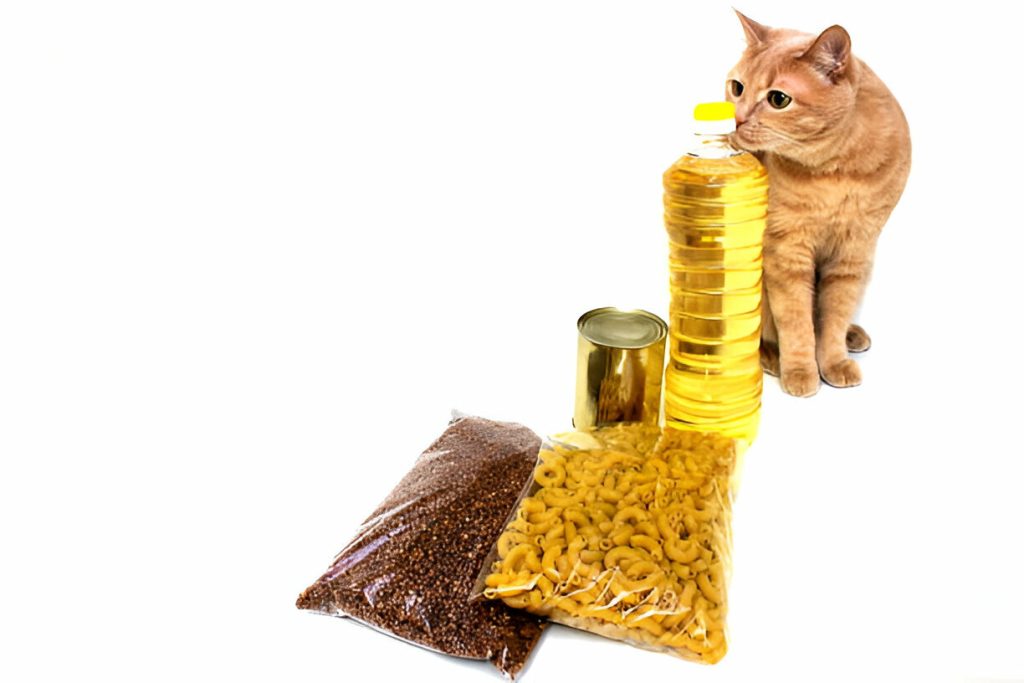
What Are the Best High Protein Low Carb Cat Food Options for Nourishing Your Feline Friend?
High Protein Low Carb Diet: This diet focuses on providing cats with a greater proportion of protein and fewer carbohydrates, closely mimicking their natural carnivorous dietary needs. Protein is essential for maintaining muscle mass and supporting various bodily functions, while low carbohydrate intake is desirable because cats have a limited ability to digest carbs effectively. Grain-Free: Often associated with high protein, low carb cat foods, “grain-free” indicates the absence of wheat, corn, rice, and other grains to minimize carbohydrate content.
High protein low carb cat food is premised on the understanding of felines’ evolutionary diet. In the wild, cats primarily consume prey that features high protein content and minimal carbohydrates. Domestic cats, despite being far removed from their wild ancestors, share the same basic nutritional requirements. Modern house cats often lead less active lifestyles and may experience health problems like obesity and diabetes with a carb-heavy diet. The emphasis on high protein and low carb ingredients in cat food is designed to align with a cat’s biological needs, optimizing their health and vitality.
Understanding the Mediterranean Diet
The Mediterranean diet is rooted in the eating patterns of countries bordering the Mediterranean Sea, celebrated for its heart-healthy benefits and rich diversity of fresh, flavorful foods. This dietary framework emphasizes the consumption of fruits, vegetables, whole grains, beans, nuts, legumes, olive oil, and flavorful herbs and spices. Poultry, fish, and seafood are enjoyed regularly, but in moderate portions, while dairy products, such as cheese and yogurt, are eaten in smaller quantities. Red meat and sweets are reserved for special occasions. A lifestyle component, regular physical activity, also forms a cornerstone of this diet, reinforcing the synergy between diet and exercise. The Mediterranean diet is not only approachable due to its variety and flexibility but also because it can easily be adapted to cater to different cultural and personal food preferences, making it a perennial favorite among nutritionists and health enthusiasts alike.
Benefits of Biophilic Design in Urban Spaces
Biophilic design is an innovative approach to urban architecture that integrates nature into the built environment, aiming to satisfy humans’ innate desire to connect with the natural world. This design philosophy has been associated with a multitude of health and wellness benefits, such as stress reduction, improved cognitive function, and enhanced mood and creativity. In biophilic urban spaces, elements like living walls, rooftop gardens, natural lighting, and the incorporation of natural materials, such as wood and stone, are prevalent. These features mimic the patterns and forms found in nature, fostering a sense of tranquility and balance within bustling cityscapes. Parks, greenways, and water features are strategically integrated into city plans to promote biodiversity and offer residents a reprieve from the concrete jungle. By bringing elements of the wild into everyday spaces, biophilic design seeks to make urban living healthier and more sustainable.
Renewable Energy Sources for a Sustainable Future
Renewable energy has become a crucial pillar in the quest for a sustainable future, with a host of options available to reduce the global carbon footprint. Solar power harnesses the boundless energy of the sun through photovoltaic cells, converting sunlight directly into electricity. This technology has been exponentially advancing, becoming more efficient and accessible to homeowners and businesses. Wind energy captures the kinetic energy of wind through towering turbines, converting it to electrical power. Wind farms can be found both onshore and offshore, exhibiting massive potential for clean, renewable energy generation. Hydropower utilizes the energy of flowing water, from rivers or man-made reservoirs, to produce electricity via hydroelectric dams, while emerging technologies such as tidal and wave power seek to exploit the vast energy potential of the oceans. Geothermal energy taps into the earth’s natural heat, using it for electricity production and direct heating applications, and is notable for its minimal environmental impact and incredible reliability. Lastly, biomass energy is derived from organic materials, such as plants and waste, which can be converted into biofuels for transportation or used for heating and electricity generation. These diverse sources of renewable energy are paving the way toward a cleaner, more resilient, and energy-independent world.
Why is high protein important in a cat’s diet?
Protein is a crucial component in a cat’s diet because it serves as the primary source of energy for these obligate carnivores. Cats have specific physiological needs that align with a high intake of proteins, which are essential for supporting their muscle growth, repair, and maintenance. Moreover, proteins provide the building blocks for enzymes, hormones, antibodies, and other important physiological processes in a feline’s body. Unlike some other animals, cats have a limited ability to adapt to a low-protein diet and require a consistent supply to thrive.
Focusing on high protein in a cat’s diet also helps to maintain a healthy weight. Excess carbohydrates can lead to obesity and other related health issues, but a diet rich in protein can support lean muscle mass and encourage an ideal body condition. This aligns with their natural eating habits in the wild, where their diet would typically consist of high amounts of protein. Therefore, ensuring a high-protein diet mimics their natural feeding patterns and supports optimal health.
What are the disadvantages of high carb diets for cats?
High carbohydrate diets can be problematic for cats. Unlike humans or dogs, cats have a limited ability to metabolize carbohydrates efficiently. Diets that are high in carbs can lead to a range of health issues in cats, including obesity and diabetes mellitus. Obesity in cats can further result in other complications such as arthritis, urinary tract disease, and hepatic lipidosis (fatty liver disease). These health risks are magnified because cats do not have a strong physiological need for carbohydrates, and their bodies are adapted to metabolize proteins and fats more effectively.
Another issue with high carb diets is the potential to disrupt the balance of gut flora and trigger digestive problems. Cats consuming diets with excessive carbohydrates may experience gastrointestinal disturbances like diarrhea or constipation. Moreover, a diet that isn’t aligned with a cat’s carnivorous dietary requirements may also lead to reduced energy levels and an overall decrease in wellbeing. Thus, keeping the carbohydrate content low in a cat’s diet is more in line with their natural nutrition requirements.
Are grain-free cat foods inherently low in carbohydrates?
Not all grain-free cat foods are low in carbohydrates. While grain-free diets eliminate grains, which are a source of carbs, they often replace them with other carbohydrate sources such as potatoes, peas, or lentils. These alternative carbohydrate sources can still contribute significantly to the total carb content of the diet. Therefore, it is essential that pet owners closely examine the ingredients and nutritional information of grain-free foods to assess their carbohydrate levels.
It’s a common misconception that ‘grain-free’ equals low-carb, which is not always the case. When choosing a grain-free option for a low-carb diet, it’s important to analyze the guaranteed analysis on the pet food label, which lists the minimum and maximum percentages of protein, fat, fiber, and moisture. While this information does not give the exact amount of carbohydrates, it can help guide owners toward products with higher protein and lower carb contents. Pet owners should also consider the quality and digestibility of the ingredients to ensure they are providing a diet that meets their feline friend’s nutritional needs.
How can I determine the carbohydrate content of my cat’s food?
The carbohydrate content of cat food is often not directly listed on the label, so calculating it may require a bit of math. To determine the carbohydrate content, first, look at the guaranteed analysis on the packaging, which will list the minimum percentages of protein, fat, and fiber, and the maximum percentage of moisture. The percentage of carbohydrates is not a required listing in the guaranteed analysis, so you’ll need to add these percentages up, subtract from 100, and then consider that ash (minerals) typically makes up about 5-8% of the food. The resulting number will give you an estimate of the carbohydrate content.
An alternative method is to look at the ingredient list and nutritional information on the manufacturer’s website, where some companies will list the carbohydrate content explicitly. If the information isn’t publicly available, you can contact the company directly to ask. When evaluating the carbohydrate content, keep in mind that a diet lower in carbs and higher in protein is generally more suitable for felines, reflecting their natural nutritional requirements as carnivores.
What are the benefits of low carb diets for diabetic cats?
Low carbohydrate diets are particularly beneficial for diabetic cats. Since cats are not naturally adapted to high carb intake, reducing the carbohydrates can help regulate blood sugar levels. When a cat consumes fewer carbohydrates, there is less glucose entering the bloodstream, and consequently, less insulin is needed to process glucose into energy. This can make it easier to manage diabetes and, in some cases, may even lead to remission of the disease, meaning the cat can maintain normal blood sugar levels without insulin injections.
Additionally, low carb diets can assist in managing a cat’s weight, which is an important factor in diabetes care. Overweight cats are more susceptible to insulin resistance, which is when the body’s cells do not respond normally to insulin. By keeping the carbohydrate intake low, cats are more likely to maintain a healthy weight, thus reducing the risk of insulin resistance and aiding in the effective management of diabetes. Veterinarians often recommend a diet high in protein and low in carbohydrates for diabetic cats to help control the disease and promote a healthier lifestyle.
Can switching to a high protein low carb diet improve my cat’s coat and skin health?
Switching to a high protein, low carbohydrate diet can have positive effects on your cat’s coat and skin health. Proteins are the main components of skin and hair, and they play a significant role in the regeneration of skin cells and the growth of a healthy, lustrous coat. A diet that is rich in high-quality animal proteins provides the necessary amino acids that are the building blocks for strong and resilient skin and fur. Inadequate protein intake can result in a dull coat, excessive hair loss, and poor skin condition.
Furthermore, a diet with excess carbohydrates may contribute to skin inflammation and other dermatological issues. When felines are fed a diet that better matches their evolutionary nutritional requirements—high in protein and low in carbs—they tend to have healthier skin and coats. This is likely because their bodies are getting optimal nutrition for maintaining skin cell integrity and hair follicle strength, which in turn leads to a more vibrant coat and healthier overall skin.
Is a high protein low carb diet appropriate for all cats?
While most cats will benefit from a high protein, low carbohydrate diet, there are certain conditions and life stages where a different nutritional balance might be required. For instance, cats with certain health issues such as kidney disease may need a diet that is restricted in protein to reduce the workload on the kidneys. It’s important to note that the specific protein needs can vary greatly among individual cats, and dietary requirements can change as cats age or if they develop health problems. Therefore, it’s crucial that any diet changes be discussed with a veterinarian who can provide personalized advice based on the cat’s medical history and condition.
Kittens, pregnant, and nursing cats generally have higher protein and overall caloric requirements, so while they still need a diet lower in carbs, they may require more protein and fat for proper development and energy. Always consult with a veterinarian before making significant changes to your cat’s diet to ensure their individual nutritional needs are met and that the diet supports their overall health and wellbeing.
How do I transition my cat to a high protein low carb diet?
Transitioning your cat to a new diet should be done gradually to allow their digestive system to adjust and to prevent any adverse reactions such as an upset stomach or refusal to eat. Start by mixing a small amount of the new high protein, low carb food with your cat’s current food. Over the course of several days or even weeks, progressively increase the proportion of the new food while decreasing the old food. This slow transition helps reduce the risk of gastrointestinal upset and helps to ensure that the cat accepts the new diet.
It’s also important to monitor your cat’s reaction to the new diet closely. Some cats may be finicky eaters and resist changes to their food, so patience is key. If your cat is particularly hesitant, you may need to extend the transition period to allow them more time to acclimate. If at any point your cat stops eating, experiences vomiting, diarrhea, or any other concerning symptoms, consult your veterinarian. They can offer guidance on the transition process and help determine if the new diet is appropriate for your feline friend.
What should I look for on the label when selecting a high protein low carb cat food?
When selecting a high protein, low carb cat food, look for a product that lists real animal protein sources as the first few ingredients. The ingredients are listed in order by weight, so having meat, fish, or animal by-products at the top of the list indicates a higher protein content. Be cautious of foods that list fillers, grains, or by-products lower down the list of ingredients. While these ingredients may not be harmful, they can increase the carbohydrate content and thus are less desirable in a low-carb diet.
Also, check the guaranteed analysis on the label, which should show a high percentage of protein and a lower percentage of carbohydrates. However, since carbs aren’t always listed, you may need to estimate the carbohydrate content using the method outlined earlier. Avoid foods with added sugars or sweeteners as these unnecessary ingredients increase the carb content. Additionally, consider the food’s fat content and caloric density, especially if your cat is overweight or has specific energy requirements. Consult with your veterinarian to determine the most appropriate nutrient profile for your cat’s unique dietary needs.
Can high protein low carb diets reduce the risk of obesity in cats?
High protein, low carbohydrate diets can help reduce the risk of obesity in cats. Obesity in felines often results from diets that are high in carbohydrates and calories and low in proteins. Cats metabolize proteins more efficiently than they do carbohydrates, and diets that are rich in high-quality animal proteins tend to promote a healthy weight and lean body mass. Proteins are also more satiating, meaning they can make a cat feel fuller for longer, potentially resulting in reduced calorie intake and better weight management.
Moreover, overweight cats are at a higher risk for a variety of health conditions, including diabetes, arthritis, and liver disease. By feeding a diet that is in line with a cat’s natural eating habits—centered around meat and low in carbs—pet owners can help ensure that their cats maintain a healthy weight. It is always important to provide portion-controlled meals and factor in the cat’s activity level to prevent overfeeding. Regular veterinary check-ups and discussions about diet can help manage and prevent obesity in feline companions.
Final Thoughts
Opting for high protein low carb cat food is a natural choice that aligns with feline carnivorous dietary needs. This type of diet helps maintain lean muscle mass, supports a healthy weight, and can prevent or manage diabetes. When selecting high protein low carb cat food, prioritize real meat or fish as the primary ingredients to ensure a biologically appropriate nutrient profile.
It’s also critical to consider factors like the life stage of the cat, any health issues, and specific nutritional needs when choosing a diet. Wet foods are typically lower in carbs and higher in moisture compared to their dry counterparts, making them a favorable option for this diet, especially for hydration and urinary health. When switching your cat to a high protein low carb diet, do so gradually to allow your pet’s digestive system to adjust without undue stress.
Monitor your cat’s health and vitality closely after transitioning to a high protein low carb cat food. Consultation with a veterinarian is advisable to tailor the diet specifically to your cat’s unique requirements and to ensure that the chosen food is delivering the intended health benefits without any adverse effects. Remember, the goal is to nourish your feline friend with a diet that’s as close as possible to what they would naturally consume in the wild while ensuring complete and balanced nutrition for their overall well-being.

